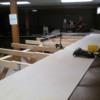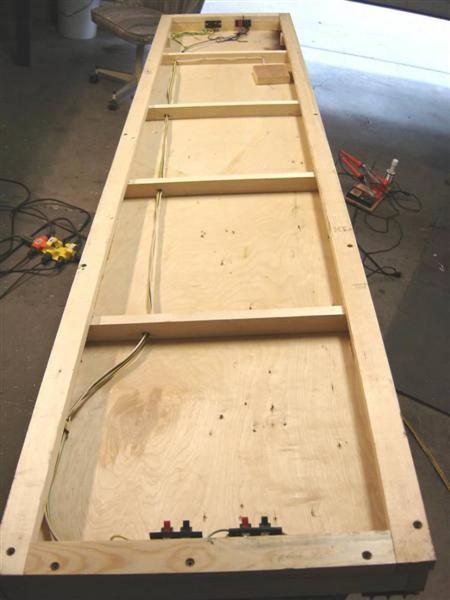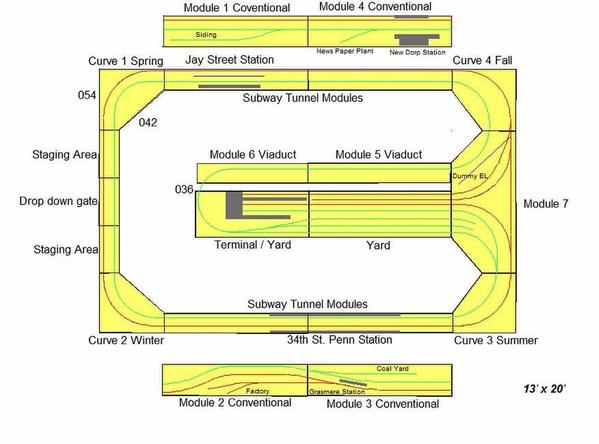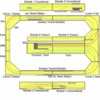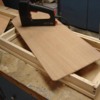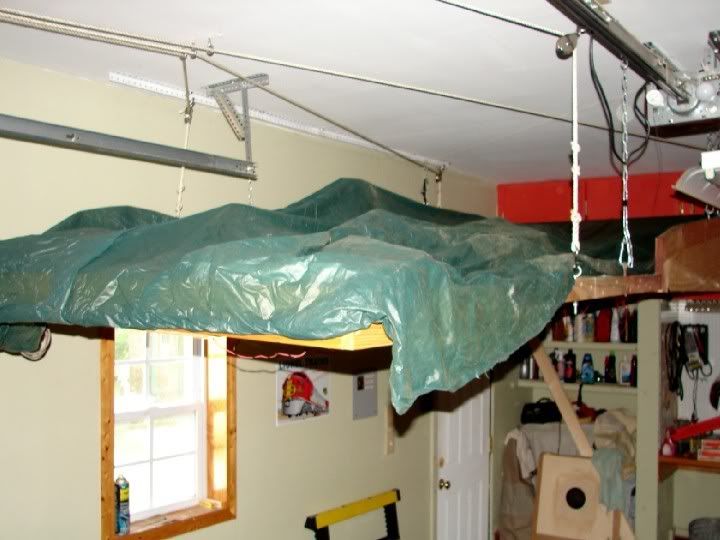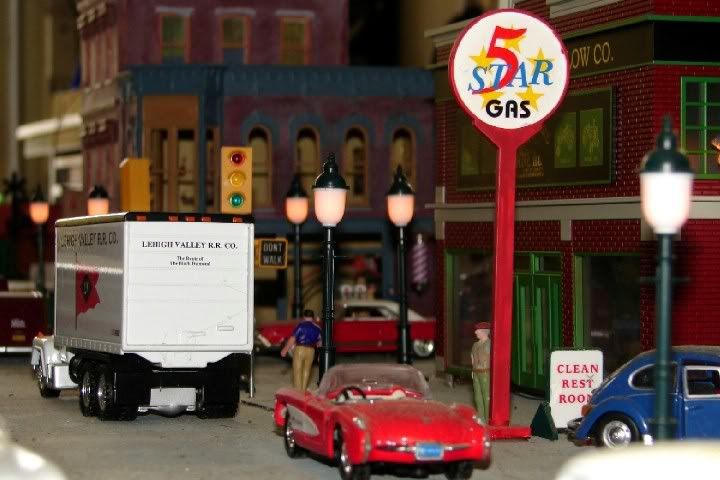Our museum has used OSB for 0 and Standard Gauge layout benchwork, laid over 2x4's. It seems to be working fine so far. We put 1/2" sound board on top. I built my own layout with 1/2" plywood and 1/2" sound board with 2x4 framing. It is very solid and I can walk all over it, no problem. (I have to walk on it to clean ceiling fans, skylight, etc.) Legs are 2x3, mainly because I got some junk 2x6's for free and after ripping them, cutting them to length, and squaring up, they were perfect and the price was right. I squared up all my framing lumber on a jointer and planer. It was time consuming, but it meant that the modules mated up perfectly and I didn't have to deal with laying plywood on top of warped stringers. I also put screw adjusters in the bottom of the legs so I could level the table without using shims.
One thing to consider when deciding on framing material is that if you use one-by, you have to be very precise in locating your screws. It's not a full inch thick, of course, so if your screw alignment is the least bit off, you could have a screw sticking half out the side of a support beam. And screws in the end grain won't have the strength that they will in a 2x4. That's why I decided to use 2x4 rather than 1x4 for my framing.
Finally, I'm not convinced that saving weight is a good thing. Weight equals stability and helps sound damping. I wouldn't advise plywood any thicker than 1/2" because a full sheet is just too hard for one guy to handle, but I don't see any real advantage to using 1x4 over 2x4 unless you're building a portable layout.
As far as the comment about 1/2" plywood soaking up humidity in a basement, it depends on how humid the basement is and how cheap the plywood is. Some of the cheap imported plywood from Asia is going to soak up water like a sponge; better quality plywood will be more resistant. The real issue in humid climates is the sound board or Homasote on the top. That stuff MUST be painted on both sides and the edges. That also keeps the sound board from shedding all over the place. I use latex primer. The store will usually tint it for free, which lets you get it closer to your final color.




